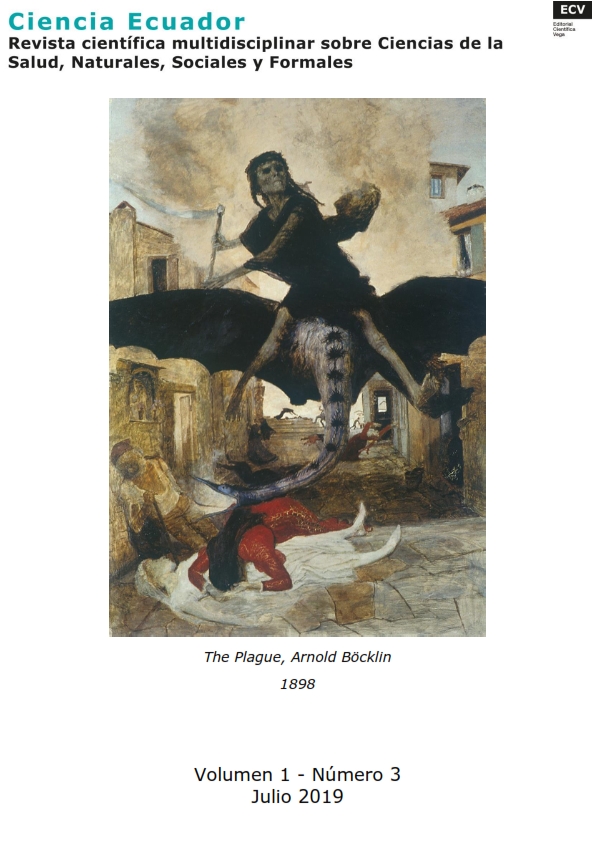The return of the bubonic plague?
Review Article
Keywords:
Yersinia pestis, Plague, ReviewAbstract
The Plague has returned to be in the center of discussions between the centers of infectious diseases, since in Mongolia were recently reported the appearance and death of two probable cases of this disease, which has caused devastating pandemics for the human species, such as the Black Death in the Middle Ages. The bubonic plague is an infection caused by the microorganism
Yersinia pestis, which is spread in the human body by lymphatic route from its sites of inoculation, causing an intense inflammatory picture characterized by fever> 38 ° C, malaise, myalgias, dizziness, vomiting and pain, caused by the inflammation of the regional lymph nodes (buboes), which can lead to septic shock and cause the death of the patient. The report of these two cases, considers important to maintain control and prevent an epidemic outbreak on time, however it becomes necessary to make a literature review about this disease, to remember its clinical manifestations, diagnosis, and treatment.
References
Sexton D, Stout J. Epidemiology, microbiology and pathogenesis of plague (Yersinia pestis infection) [Internet]. Uptodate.com. 2018 [cited 8 May 2019]. Available from: https://www.uptodate.com/contents/epidemiology-microbiology-and-pathogenesis-of-plague-yersinia-pestis-infection
Lawler A. How Europe exported the Black Death. Science [Internet]. 2016 [cited 7 May 2019];352(6285):501-502. Available from: https://doi.org/10.1126/science.352.6285.501
Galy A, Loubet P, Peiffer-Smadja N, Yazdanpanah Y. La peste : mise au point et actualités. La Revue de Médecine Interne [Internet]. 2018 [cited 7 May 2019];39(11):863-868. Available from: https://doi.org/10.1016/j.revmed.2018.03.019
Agence France-Presse in Ulaanbaatar. Mongolian couple die of bubonic plague after eating marmot. The Guardian [Internet]. 2019 [cited 7 May 2019]; Available from: theguardian.com
Sexton D, Stout J. Clinical manifestations, diagnosis, and treatment of plague (Yersinia pestis infection) [Internet]. Uptodate.com. 2018 [cited 8 May 2019]. Available from: uptodate.com
Nikiforov V, Gao H, Zhou L, Anisimov A. Plague: Clinics, Diagnosis and Treatment. Advances in Experimental Medicine and Biology. 2016;(918):293-312. doi: 10.1007/978-94-024-0890-4_11
Grácio A, Grácio M. Plague: A Millenary Infectious Disease Reemerging in the XXI Century. BioMed Research International [Internet]. 2017 [cited 7 May 2019];2017:1-8. doi: 10.1155/2017/5696542
OMS. Peste [Internet]. Organización Mundial de la Salud. 2017 [cited 8 May 2019]. Available from: who.int
Stock I. [Yersinia pestis and plague - an update]. Med Monatsschr Pharm. [Internet]. 2014 [cited 7 May 2019];37(12):441-8; quiz 449. Available from: ncbi.nlm.nih.gov/pubmed/25643450
Pechous R, Sivaraman V, Stasulli N, Goldman W. Pneumonic Plague: The Darker Side of Yersinia pestis. Trends in Microbiology [Internet]. 2016 [cited 7 May 2019];24(3):190-197. doi: 10.1016/j.tim.2015.11.008
Riehm J, Löscher T. Pest und Lungenpest. Bundesgesundheitsblatt - Gesundheitsforschung - Gesundheitsschutz [Internet]. 2015 [cited 7 May 2019];58(7):721-729. doi: 10.1007/s00103-015-2167-9
Yang R. Plague: Recognition, Treatment, and Prevention. Journal of Clinical Microbiology [Internet]. 2017 [cited 7 May 2019];56(1):1-6. doi: 10.1128/JCM.01519-17
Kasper D, Fauci A, Hauser S, Longo D, Jameson J, Loscalzo J. Harrison Manual de Medicina. 19th ed. Mexico D. F.: McGraw-Hill Education.; 2017. p. 465-466.
Burki T. Plague in Madagascar. The Lancet Infectious Diseases [Internet]. 2017 [cited 9 May 2019];17(12):1241. doi: 10.1353/bhm.2017.0025
Riehm J, Löscher T. Pest und Lungenpest. Bundesgesundheitsblatt - Gesundheitsforschung - Gesundheitsschutz [Internet]. 2015 [cited 10 May 2019];58(7):721-729. doi: 10.1007/s00103-015-2167-9.
Hashemi Shahraki A, Carniel E, Mostafavi E. Plague in Iran: its history and current status. Epidemiology and Health [Internet]. 2016 [cited 10 May 2019];38:e2016033. doi: 10.4178/epih.e2016033
Butler T. Plague history: Yersin’s discovery of the causative bacterium in 1894 enabled, in the subsequent century, scientific progress in understanding the disease and the development of treatments and vaccines. Clinical Microbiology and Infection [Internet]. 2014 [cited 10 May 2019];20(3):202-209. doi: 10.1111/1469-0691.12540

Published
How to Cite
Issue
Section
License
Copyright (c) 2019 Ciencia Ecuador

This work is licensed under a Creative Commons Attribution-NonCommercial-ShareAlike 3.0 Unported License.
This is a human-readable summary of (and not a substitute for) the license.
You are free to:
Share — copy and redistribute the material in any medium or format
Adapt — remix, transform, and build upon the material
The licensor cannot revoke these freedoms as long as you follow the license terms.
Under the following terms:
Attribution — You must give appropriate credit, provide a link to the license, and indicate if changes were made. You may do so in any reasonable manner, but not in any way that suggests the licensor endorses you or your use.
NonCommercial — You may not use the material for commercial purposes.
ShareAlike — If you remix, transform, or build upon the material, you must distribute your contributions under the same license as the original.
No additional restrictions — You may not apply legal terms or technological measures that legally restrict others from doing anything the license permits.
Notices:
You do not have to comply with the license for elements of the material in the public domain or where your use is permitted by an applicable exception or limitation.
No warranties are given. The license may not give you all of the permissions necessary for your intended use. For example, other rights such as publicity, privacy, or moral rights may limit how you use the material.


